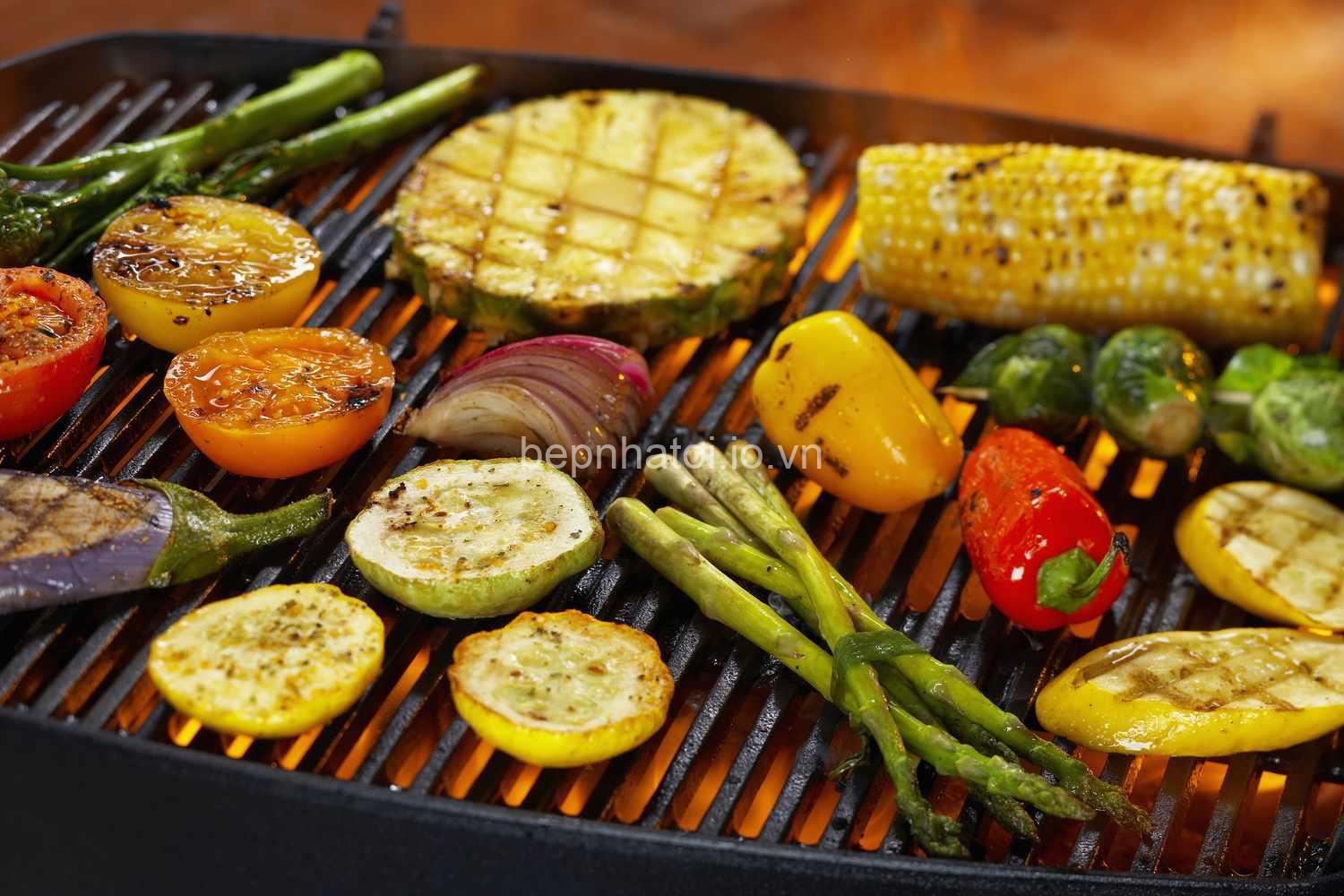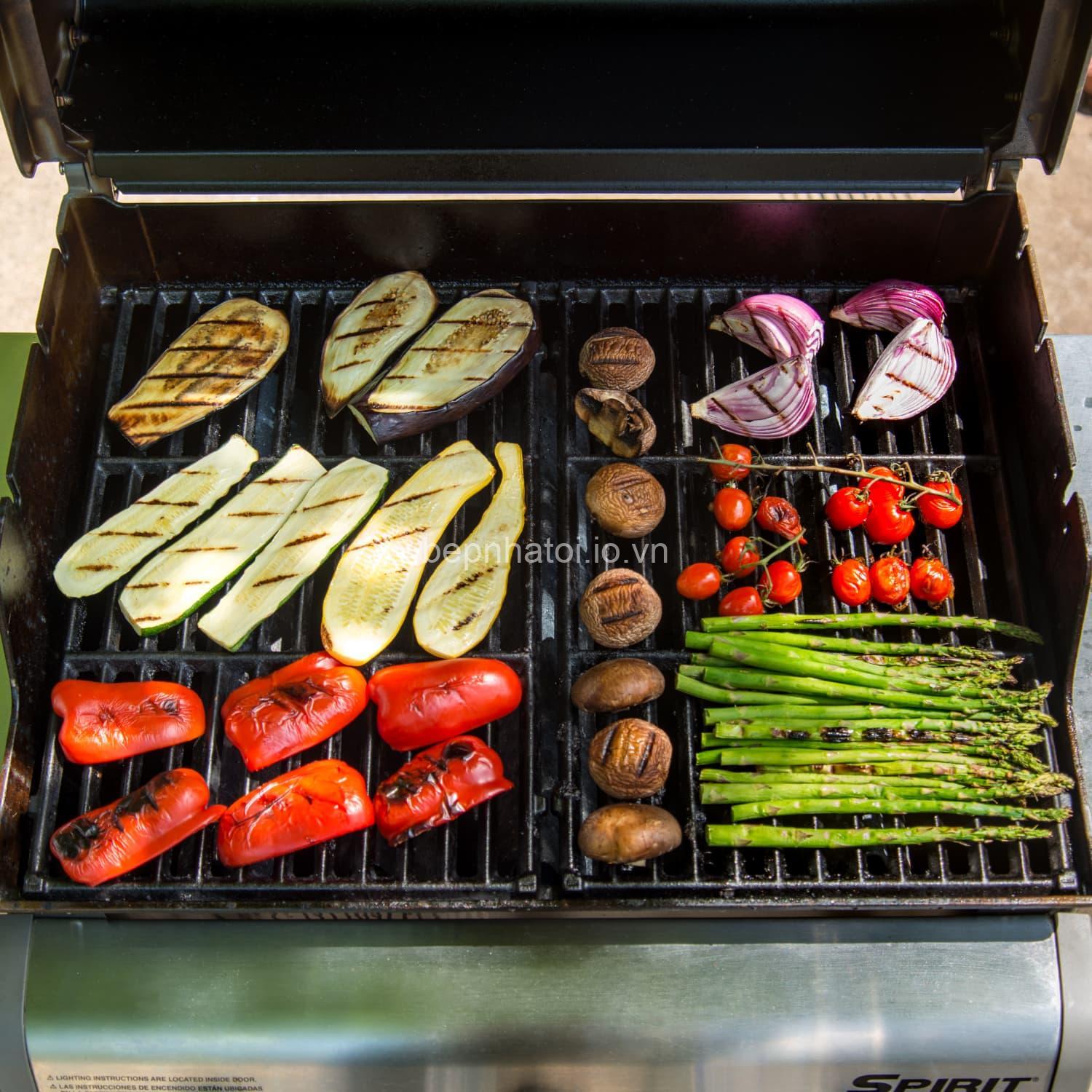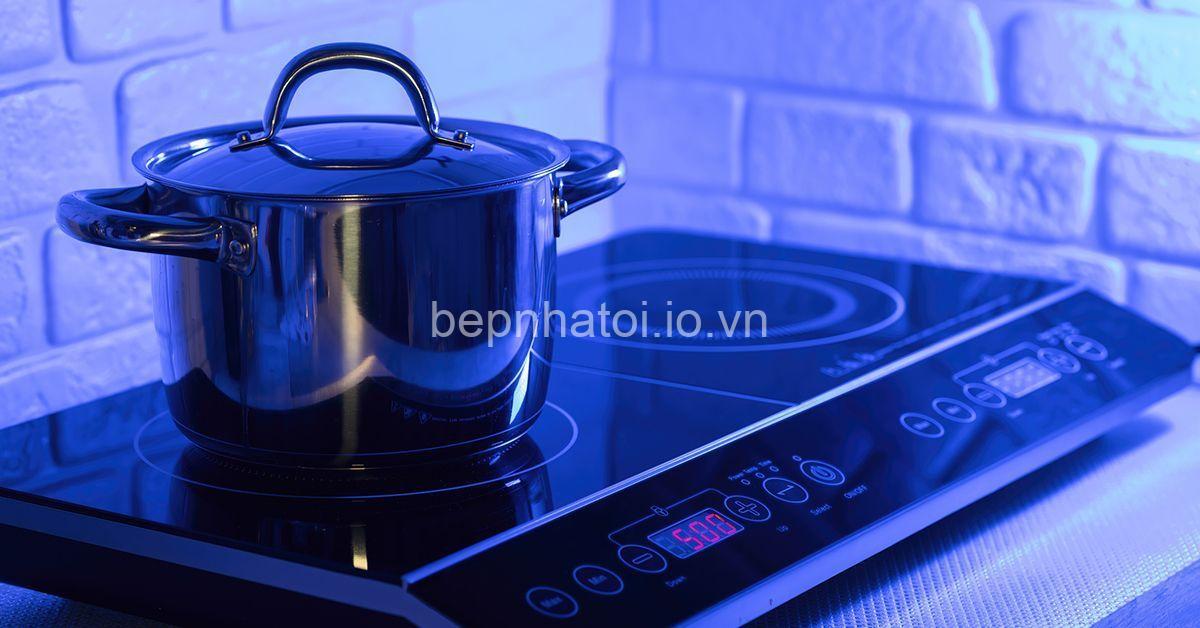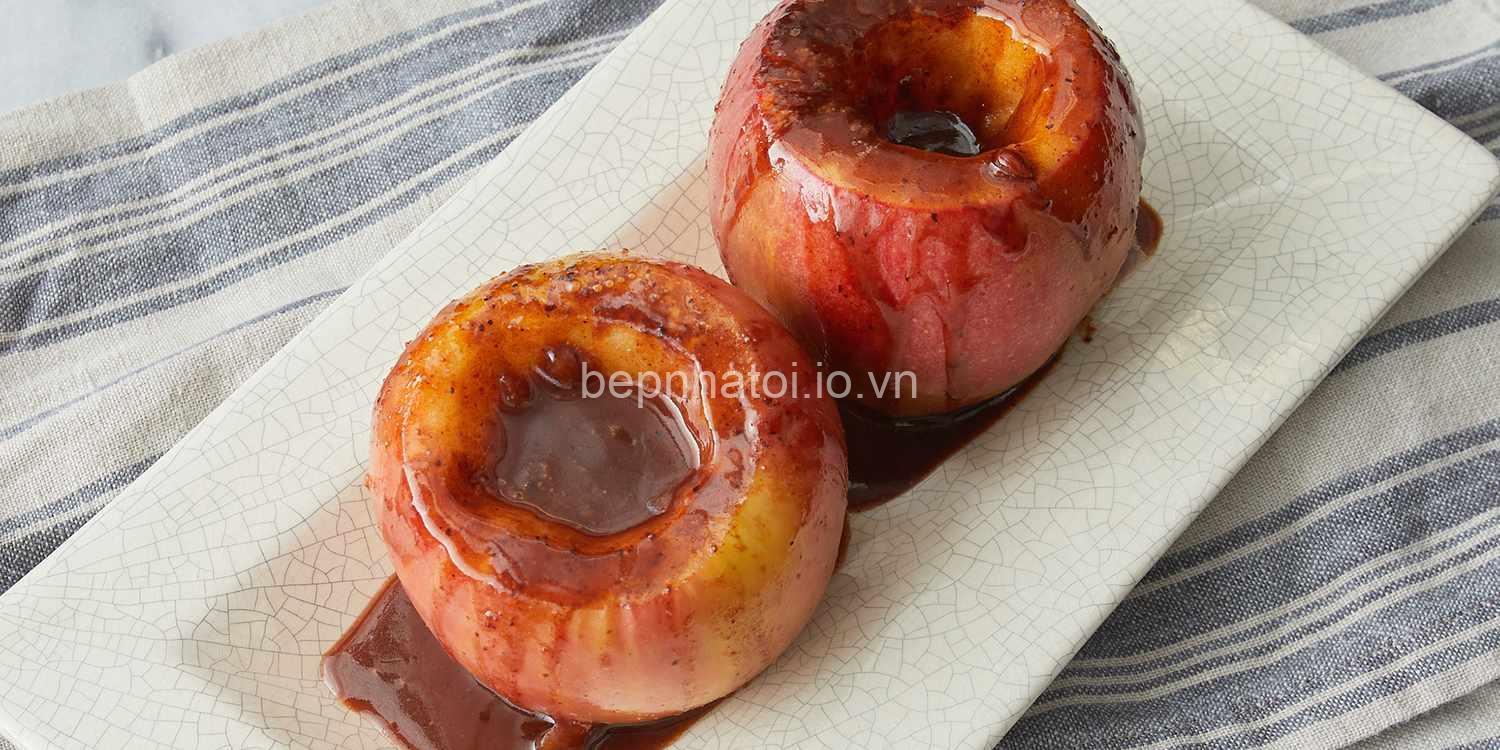
How to Grill Meat Evenly: Mastering Heat & Technique. In today’s article, bepnhatoi.io.vn will explore with you in the most detailed and complete way. See now!
Understanding the Fundamentals of Even Grilling
Grilling meat evenly is all about achieving consistent doneness throughout the entire piece. It’s about creating a beautiful sear on the outside while ensuring the interior is cooked to your desired level of doneness, whether it’s rare, medium-rare, or well-done.
To understand even grilling, you need to grasp the key factors that affect how heat interacts with your meat. Heat distribution, grill temperature, meat thickness, and meat type all play vital roles.

What is Even Grilling?
Imagine grilling a juicy steak. You want the outside to be perfectly seared and crisp, with a beautiful grill mark pattern, while the inside remains tender and flavorful. This is the essence of even grilling. It means every part of the meat cooks at the same rate, resulting in a consistently delicious result.
Key Factors Affecting Even Cooking
- Heat Distribution: The ideal scenario is when your grill provides consistent heat across the entire surface, preventing hot spots that can cause uneven cooking.
- Grill Temperature: Maintaining a steady temperature is crucial for consistent cooking. Too high, and you risk burning the outside before the inside is cooked through. Too low, and your meat will cook slowly and unevenly.
- Meat Thickness: Thicker cuts of meat take longer to cook than thinner ones. Understanding this difference is important for adjusting grilling times and techniques.
- Meat Type: Different types of meat have different cooking times and require different approaches to grilling. For example, a delicate fish fillet will cook faster than a thick steak.
Choosing the Right Grill for Even Cooking
The type of grill you use can significantly impact how evenly your meat cooks. Each type has its pros and cons, making it essential to choose the right one for your needs.
Gas Grills
- Pros: Consistent heat, easy temperature control, quick preheating
- Cons: Can lack the smoky flavor of charcoal grills, potential for uneven heat distribution if burners are not properly adjusted
Charcoal Grills
- Pros: Produces that delicious smoky flavor, can achieve higher temperatures for searing
- Cons: Takes longer to preheat, temperature can be inconsistent, requires more attention to maintain a consistent heat source
Smokers
- Pros: Low and slow cooking, produces exceptional smoky flavor, ideal for large cuts of meat
- Cons: Requires specialized knowledge and equipment, takes a longer time to cook
Choosing the Best Grill for Your Needs
When selecting a grill, consider your individual needs and preferences.
- What type of food do you usually grill?
- How often do you grill?
- How much space do you have for a grill?
- What is your budget for a grill?
Preheating Your Grill for Consistent Heat
Just like preheating your oven before baking, preheating your grill is a critical step for achieving even cooking. A properly preheated grill will create a consistent heat source, ensuring your meat cooks evenly.
Why Preheating is Crucial
- Even Heat Distribution: A preheated grill provides consistent heat across the entire surface, preventing hot spots that can cause uneven cooking.
- Consistent Cooking: Preheating your grill allows the meat to cook at the same rate, resulting in a consistently delicious result.
How to Preheat a Gas Grill
- Turn on all the burners and set them to high heat.
- Let the grill preheat for 10-15 minutes.
- Use a grill thermometer to ensure the grates have reached the desired temperature.
How to Preheat a Charcoal Grill
- Fill the grill with charcoal briquettes.
- Use a chimney starter to light the coals.
- Allow the coals to burn until they are covered in a light layer of ash, which typically takes about 30 minutes.
- Distribute the coals evenly across the grill.
- Use a grill thermometer to ensure the grill has reached the desired temperature.
Preheating Temperature Recommendations
Here are some general preheating temperature recommendations for different types of meat:
| Meat Type | Preheating Temperature (°F) |
|---|---|
| Steak | 450-500°F |
| Chicken | 350-400°F |
| Fish | 350-400°F |
| Pork | 350-400°F |
Master the Art of Meat Preparation for Even Cooking
Before grilling, proper meat preparation is essential for achieving even cooking. It involves seasoning, marinating, and brining, which all play a crucial role in the final outcome.
Seasoning Techniques
- Salt: Salt enhances the flavor of meat and draws out moisture, leading to a juicier result.
- Pepper: Black pepper adds a spicy kick to meat.
- Spices: A wide array of spices can be used to create unique flavor profiles.
- Rubs: A combination of spices, herbs, and sometimes salt and pepper, create a flavorful crust on the outside.
The Role of Marinades
Marinades are liquid mixtures of ingredients, typically including acid (like vinegar or lemon juice), oil, and spices, that tenderize and flavor meat. They penetrate the meat, adding depth of flavor and helping it retain moisture during cooking.
Brining Meat
Brining involves soaking meat in a salt-water solution before grilling. It helps to rehydrate the meat, making it juicier and more tender.
Prepping Different Meats
- Steak: Trim excess fat, season generously with salt and pepper, or use a steak rub.
- Chicken: Remove skin if desired, season with spices or a dry rub, and marinate or brine for added flavor and moisture.
- Fish: Season with salt, pepper, and herbs, and brush with olive oil before grilling.
- Pork: Season generously with salt, pepper, and spices, and consider a marinade or brine for extra moisture.
Mastering Grilling Techniques for Even Cooking
Now that your grill is preheated, and your meat is prepped, you’re ready to start grilling! Here’s how to master grilling techniques for perfectly cooked meat:
Direct vs. Indirect Grilling
- Direct Grilling: The meat is placed directly over the heat source, resulting in a quick cooking time and a nice sear. This method is ideal for burgers, steaks, and chicken breasts.
- Indirect Grilling: The meat is placed away from the direct heat source, usually on a cooler part of the grill. This method cooks the meat more slowly and evenly, making it suitable for larger cuts of meat, roasts, and whole chickens.
Grilling Time and Temperature
The following chart provides a general guide for grilling times and temperatures for different types of meat:
| Meat Type | Thickness | Temperature (°F) | Grilling Time (Minutes) |
|---|---|---|---|
| Steak | 1 inch | 450-500°F | 5-7 minutes per side |
| Steak | 1.5 inches | 450-500°F | 7-9 minutes per side |
| Chicken Breast | 1 inch | 350-400°F | 6-8 minutes per side |
| Chicken Thighs | 1 inch | 350-400°F | 8-10 minutes per side |
| Fish Fillet | 1 inch | 350-400°F | 3-5 minutes per side |
| Pork Chops | 1 inch | 350-400°F | 5-7 minutes per side |
Note: These are just general guidelines. Always use a meat thermometer to ensure the meat is cooked to the desired internal temperature.
Using a Meat Thermometer
A meat thermometer is an essential tool for ensuring your meat is cooked to the desired level of doneness. It accurately measures the internal temperature, eliminating guesswork and ensuring food safety.
Recognizing Signs of Doneness
While a meat thermometer is the most accurate way to determine doneness, there are also visual cues to look for:
- Steak: Rare (125-130°F), Medium-Rare (130-135°F), Medium (135-140°F), Medium-Well (140-145°F), Well-Done (145-150°F)
- Chicken: 165°F internal temperature
- Fish: 145°F internal temperature
- Pork: 145°F internal temperature
Common Grilling Mistakes and Solutions
Even seasoned grillers sometimes make mistakes. Here are some common errors and how to avoid them:
Uneven Cooking
- Causes: Hot spots on the grill, insufficient preheating, uneven meat thickness
- Solutions: Preheat the grill thoroughly, use a grill thermometer to monitor temperature, adjust cooking times based on meat thickness
Burnt Meat
- Causes: Overheating, not flipping meat frequently enough
- Solutions: Maintain consistent temperature, flip the meat frequently to prevent burning, reduce heat if necessary
Dry Meat
- Causes: Overcooking, not basting enough, not using a marinade or brine
- Solutions: Cook meat to the desired internal temperature, baste regularly with a marinade or sauce, use a marinade or brine for extra moisture
Grilling Specific Types of Meat for Perfect Results
Different types of meat require specific grilling techniques for optimal results.
Grilling Steak
- Techniques: Direct grilling, reverse searing, grilling over different heat zones
- Achieving the Perfect Sear: Use high heat to create a beautiful sear and crispy crust on the outside.
- Reverse Searing: Cook the steak slowly over low heat until almost cooked through, then sear over high heat for a final 30-60 seconds to create a crispy crust.
Grilling Chicken
- Techniques: Direct grilling, indirect grilling, basting with marinade or sauce
- Avoiding Dry Chicken: Use indirect heat for a slower cooking process, baste regularly with a marinade or sauce to keep the chicken moist.
Grilling Fish
- Techniques: Direct grilling, using a fish grilling basket, cooking over medium heat
- Preventing Overcooked or Dry Fish: Cook over medium heat for a shorter cooking time, avoid flipping fish too often.
Essential Grilling Tools and Accessories for Even Cooking
The right tools can make a big difference in achieving even cooking results.
Meat Thermometer
- Accuracy: Ensures the meat is cooked to the desired internal temperature, eliminating guesswork and ensuring food safety.
- Types: Instant-read, probe thermometers
Grill Brush
- Maintaining Clean Grates: A clean grill grate promotes even cooking and prevents food from sticking.
Grill Gloves
- Safety and Handling Hot Equipment: Protect your hands from burns when handling hot grill grates and tools.
Other Useful Tools
- Tongs: For flipping meat and moving it around on the grill.
- Spatula: For turning burgers and other flat meats.
- Basting Brush: For applying marinades and sauces.
Grilling Safety: Important Tips to Remember
Grilling is a fun and rewarding experience, but it’s essential to prioritize safety.
Food Safety
- Handling Raw Meat: Wash your hands thoroughly after handling raw meat.
- Cross-Contamination: Avoid cross-contamination by using separate cutting boards and utensils for raw meat and cooked food.
- Internal Temperatures: Use a meat thermometer to ensure the meat is cooked to the safe internal temperature.
Equipment Safety
- Using Hot Grills Safely: Be careful when handling hot grill grates and tools.
- Handling Hot Tools: Use grill gloves to protect your hands from burns.
Fire Safety
- Proper Use of Grills: Follow the manufacturer’s instructions for using your grill safely.
- Ensuring a Safe Grilling Area: Grill in a well-ventilated area, away from flammable materials, and keep a fire extinguisher nearby.
Grilling Resources and Inspiration
There are countless resources available to help you improve your grilling skills.
Grilling Websites and Blogs
- [Website Name]: [Link to website] – Provides a wealth of information about grilling, including recipes, tips, and techniques.
- [Website Name]: [Link to website] – Features a collection of grilling recipes, articles, and videos.
Grilling Books
- [Book Title]: [Link to book] – A comprehensive guide to grilling, covering all aspects of the process.
- [Book Title]: [Link to book] – Features a collection of grilling recipes from around the world.
Grilling Communities and Forums
- [Community Name]: [Link to community] – Connect with other grilling enthusiasts and share tips, recipes, and experiences.
- [Forum Name]: [Link to forum] – Ask questions and get answers from other grillers.
Conclusion
Grilling meat evenly is an art, and like any art, it takes practice and dedication. By understanding the fundamentals of heat, temperature, meat preparation, and grilling techniques, you can achieve perfectly cooked meals that will impress your family and friends.
Susan Grace Rodriguez, an animal lover and the owner of bepnhatoi.io.vn, hopes this guide has been helpful in expanding your knowledge of even grilling. Don’t hesitate to leave a comment below, share this article with your fellow grillers, or explore more content on our website at [Link to bepnhatoi.io.vn].
Remember, grilling is a journey, so embrace the process and have fun experimenting with new techniques.






